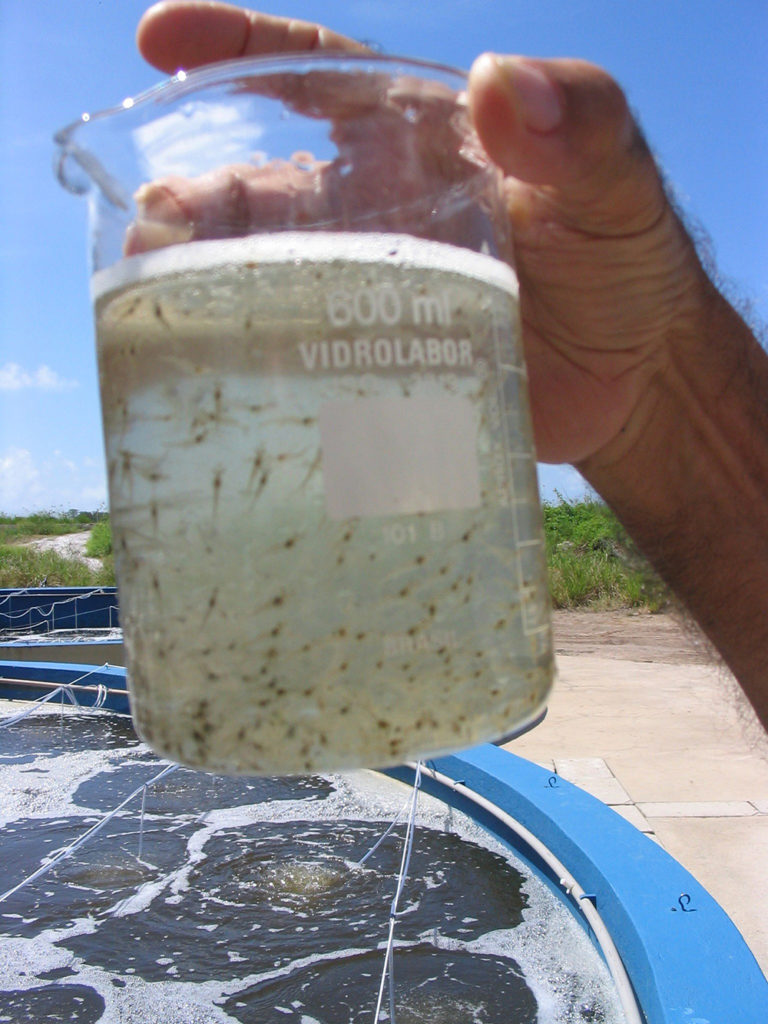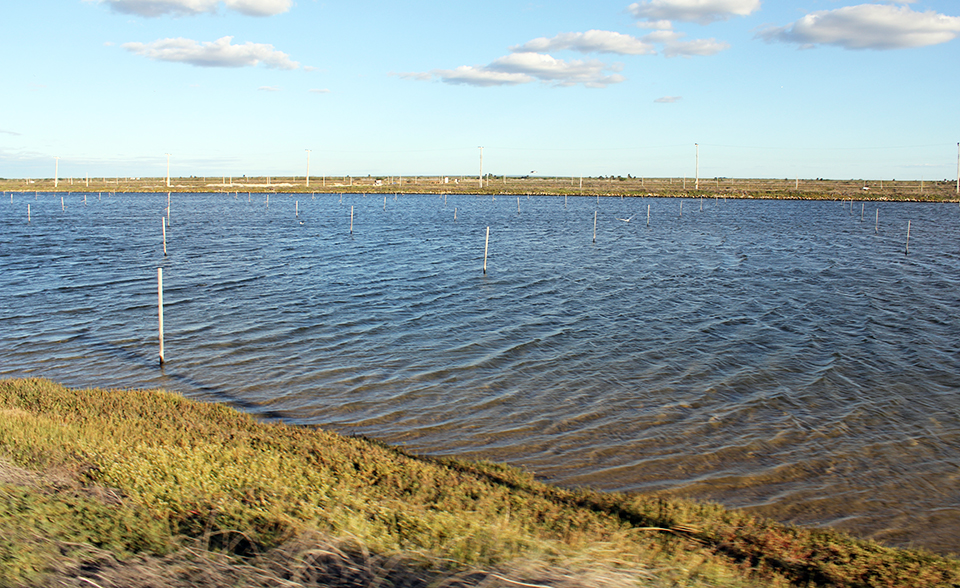Disease has been a serious obstacle for Mekong Delta shrimp farmers


Its million hectares of inland water surface, 3,260 km of coastline and large exclusive economic zone give Vietnam great potential for aquaculture and fisheries development. The country’s seafood sectors have been ranked first for farmed catfish, third for shrimp and aquaculture production, and seventh for total seafood production.
More than 90 percent of Vietnam’s culture area and 70 percent of its production are found on the Mekong River Delta. Black tiger shrimp, Penaeus monodon, make up about 81 percent of production, while white shrimp, Litopenaeus vannamei, comprise the remaining 19 percent.
AHPNS
Disease has been a serious obstacle for shrimp farming in the Mekong Delta, especially early mortality syndrome or acute hepatopancreatic necrosis syndrome (AHPNS), which appeared in shrimp farmed in coastal provinces of Vietnam in 2010. In 2011 and 2012, AHPNS continued to cause serious shrimp mortality across the delta and appeared at shrimp farms in some northern coastal provinces.
The disease has been reported to occur all year, with more severity from April to July. It has affected farms that culture black tiger shrimp, or white shrimp, mainly in areas of intensive and semi-intensive farming systems. Incidences of AHPNS seem to be higher in farms with high salinity and during dry seasons with high temperatures.
Sample collection
In research supported by the Directorate of Fisheries, Vietnam Ministry of Agriculture and Rural Development, and the United Nations Food and Agriculture Organization, the authors collected samples from 92 affected ponds on shrimp farms in Tra Vinh, Soc Trang, Bac Lieu, Ca Mau and Kien Gang Provinces in the Mekong Delta from March to September 2012. However, only 56 of the ponds were recorded as affected by AHPNS.
Various disease signs were noted at pond level. Moribund shrimp stopped feeding and came to the sides of ponds. Dead shrimp were found at the bottoms of culture ponds from 10 to 45 days after stocking. Diseased shrimp displayed clinical signs such as hepatopancreatic atrophy with the organ a pale/white color and discontinuous contents in the gut or empty gut. Mortality up to 60 percent has been observed three to seven days after the appearance of clinical signs.
Results
Histological analysis of moribund shrimp specimens revealed typical pathology of AHPNS, such as dysfunction of hepatopancreatic cells, tubule epithelium sloughing, significant hemocytic inflammation and some tubules with putative vibriosis.
Gram staining of fresh smears of hepatopancreatic tissue from affected shrimp clearly showed the presence of Gram-negative rod-shaped bacteria. A total of 42 Vibrio bacterial isolates were recovered from hepatopancreatic tissue samples from shrimp with typical AHPNS pathology and identified at species level.
These bacteria were Gram-negative, short rod-shaped and positive for oxidase and catalase, oxidation and fermentation of glucose. They grew on thiosulfate citrate bile salt agar in green-colored, round, convex colonies with diameters of 2 to 3 mm.
Among these, one isolate was identified as V. alginolyticus, one was identified as V. fluvialis, one was identified as V. vulnificus, and 39 isolates were identified as V. parahaemolyticus, as confirmed by 16S rRNA sequencing. All the V. parahaemolyticus isolates revealed hemolysis after two days of incubation on blood agar plates. Three isolates were found to carry phages.
Water samples were also collected from the affected ponds. Environmental parameter tests showed that water quality was not the main cause for shrimp health issues. Concentrations of ammonia, nitrite and sulfide were within acceptable ranges for shrimp culture in all tested ponds.
Residues of pesticides such as cypermethrin and deltamethrin have been detected in both affected and unaffected ponds in the Mekong Delta. However, experimental study evaluated the effects of deltamethrin showed no signs of typical AHPNS in hepatopancreas tissues of exposed shrimp.
Challenge effects
Challenge by immersion of healthy L. vannamei postlarvae (P.L.15) in 0.22-µ filtered hepatopancreatic extract from AHPNS shrimp in a 10-fold dilution gave negative results for AHPNS histopathology seven, 14 and 21 days after the immersion. Similarly, challenge experiments involving muscular injection of 1-g L. vannamei juveniles with 0.22- and 0.45-µ filtered whole head or hepatopancreatic extract from AHPNS shrimp resulted in no mortality or AHPNS histopathology 14 days after injection.
Experimental challenge of 1.5-g white shrimp at 104, 105 and 106 CFU/g showed that a V. parahaemolyticus strain that carried a phage was capable of causing AHPNS pathology similar to that seen in shrimp collected from ponds in the groups challenged with 105 CFU/g at nine days and 106 CFU/g at six days post-challenge.
Currently, the authors are conducting a laboratory feeding and co-habitation trial using fresh AHPNS-infected shrimp specimens.
(Editor’s Note: This article was originally published in the July/August 2013 print edition of the Global Aquaculture Advocate.)
Authors
-
Dr. Dang Thi Hoang Oanh
Department of Aquatic Pathology
College of Aquaculture and Fisheries
Cantho University
Campus 2, 3-2 Street, Ninh Kieu District
Cantho City, Vietnam[110,118,46,117,100,101,46,117,116,99,64,104,110,97,111,104,116,100]
-
Dr. Truong Quoc Phu
Dr. Nguyen Thanh Phuong
Department of Aquatic Pathology
College of Aquaculture and Fisheries
Cantho University -
Dr. Pham Anh Tuan
Directorate of Fisheries
Hanoi City, Vietnam
Tagged With
Related Posts

Responsibility
A look at various intensive shrimp farming systems in Asia
The impact of diseases led some Asian shrimp farming countries to develop biofloc and recirculation aquaculture system (RAS) production technologies. Treating incoming water for culture operations and wastewater treatment are biosecurity measures for disease prevention and control.

Health & Welfare
A study of Zoea-2 Syndrome in hatcheries in India, part 1
Indian shrimp hatcheries have experienced larval mortality in the zoea-2 stage, with molt deterioration and resulting in heavy mortality. Authors investigated the problem holistically.

Health & Welfare
A study of Zoea-2 Syndrome in hatcheries in India, part 2
Indian shrimp hatcheries have experienced larval mortality in the zoea-2 stage, with molt deterioration and resulting in heavy mortality. Authors considered biotic and abiotic factors. Part 2 describes results of their study.

Health & Welfare
AHPN inferences based on behavior of vibrio bacteria
Vibrio parahaemolyticus, a strain of which is the cause of acute hepatopancreatic necrosis (AHPN), has both virulent and benign strains. This strain colonizes the stomachs of shrimp by the formation of a biofilm, which protects it from antibiotics and other potential treatments.


